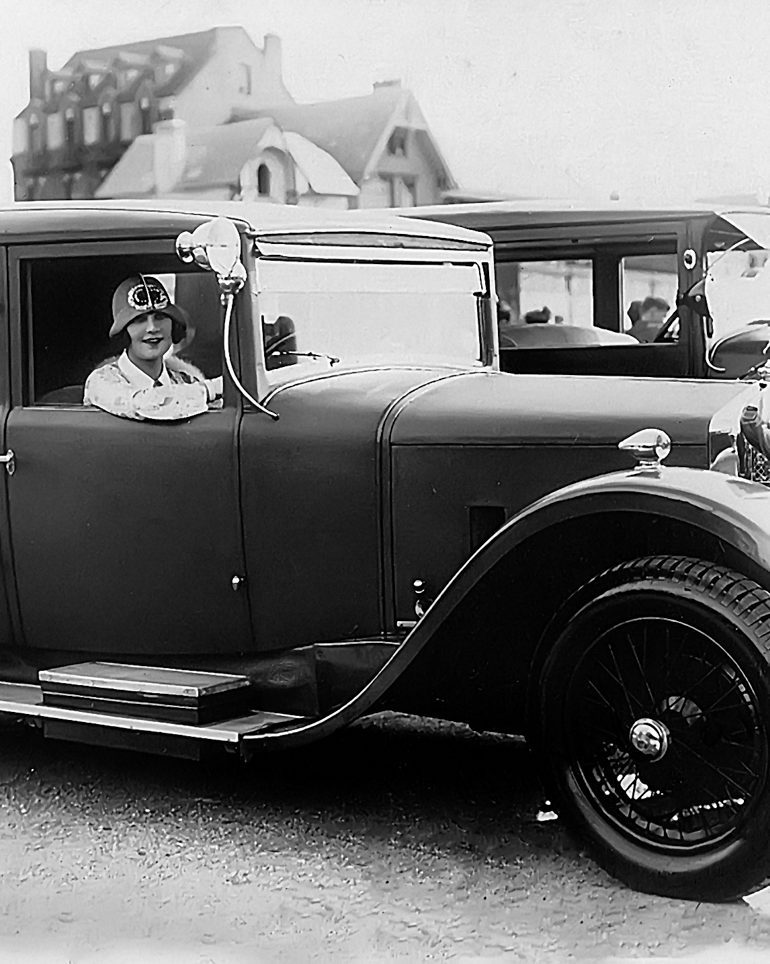
But it wasn’t always like that. When His Serene Highness Prince Albert I of Monaco inaugurated the Monte Carlo Rally back in 1911, it was billed as a “race of comfort through Europe” and had a multiplicity of starting points that included Paris, Brussels and Berlin. Drivers could almost sit back and enjoy the countryside as they wended their way to the Principality, because the time allowed to cover the distance called for a mere 7 mph average speed. The winner of the 1911 Monte was one Henri Rougier in a Turcat-Mery. We have no record of who won the prize for the best decorated car, but there was one!
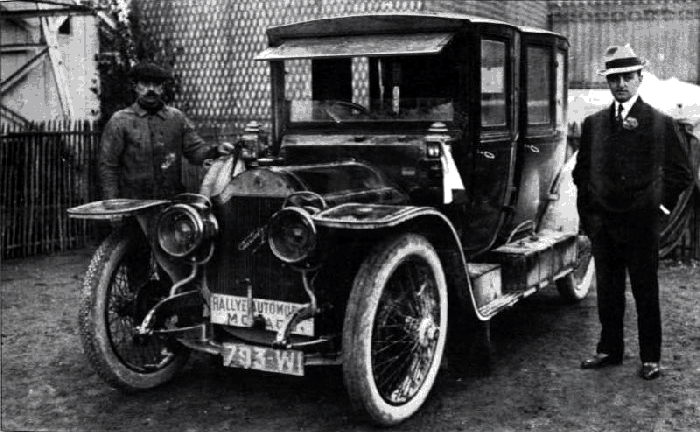
The genteel formula soon gave way to a rather complex system whereby the cars would start from various geographical locations more or less equidistant from Monte Carlo. It is a wonder the first Briton to win the event in 1926 ever got started. He was the Honourable Victor Bruce and he decided to set out from northern Scotland, but the snow was so deep en route to his point of departure that he almost didn’t get there. Severely taxed before he started, Bruce did eventually set off on his 1,530-mile marathon to Monaco and victory.
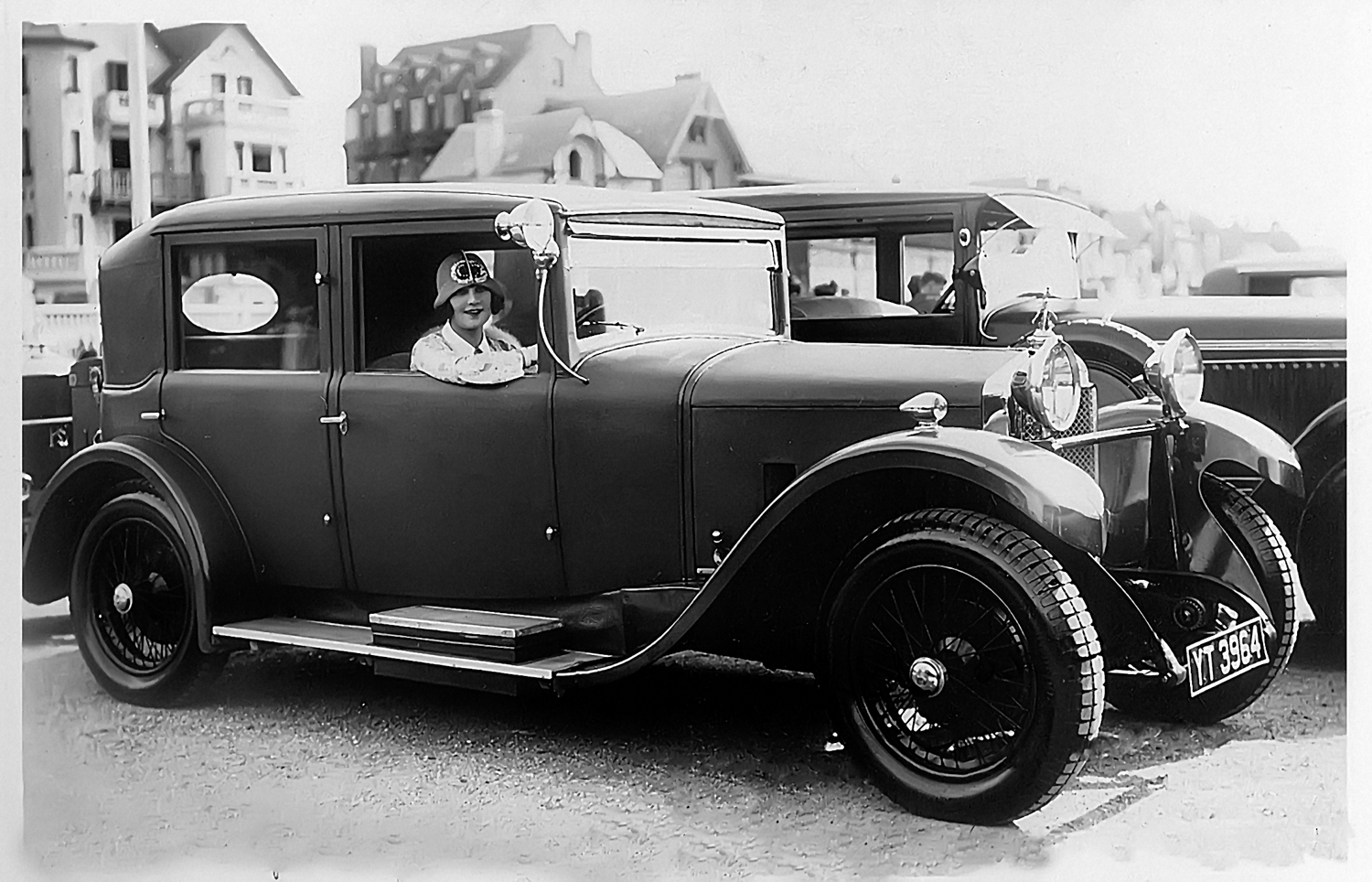
Worse still, Donald Healey of Austin-Healey fame decided to compete in the 1931 Monte in a 4,500-cc Invicta open sports car, an especially courageous choice as he opted to start from Stavanger in Norway. He had to cover 2,000 freezing miles in the topless car before he made the balmier climes of the Monte Carlo, but the tough little man won the rally. Average speeds had risen to around 40 mph by the mid-’30s and the entry had increased to over 200 cars a year, all battling manfully for glory on the icy roads of France. That caught the eye of the press, who started devoting acres of space to the rally, which in turn attracted the car manufacturers who would soon begin to enter works teams. It wasn’t exactly Henry Ford’s “win on Sunday, sell on Monday” concept, but victory in the Monte Carlo Rally did project a much more exciting image of the mundane sedans languishing in showrooms across Europe.
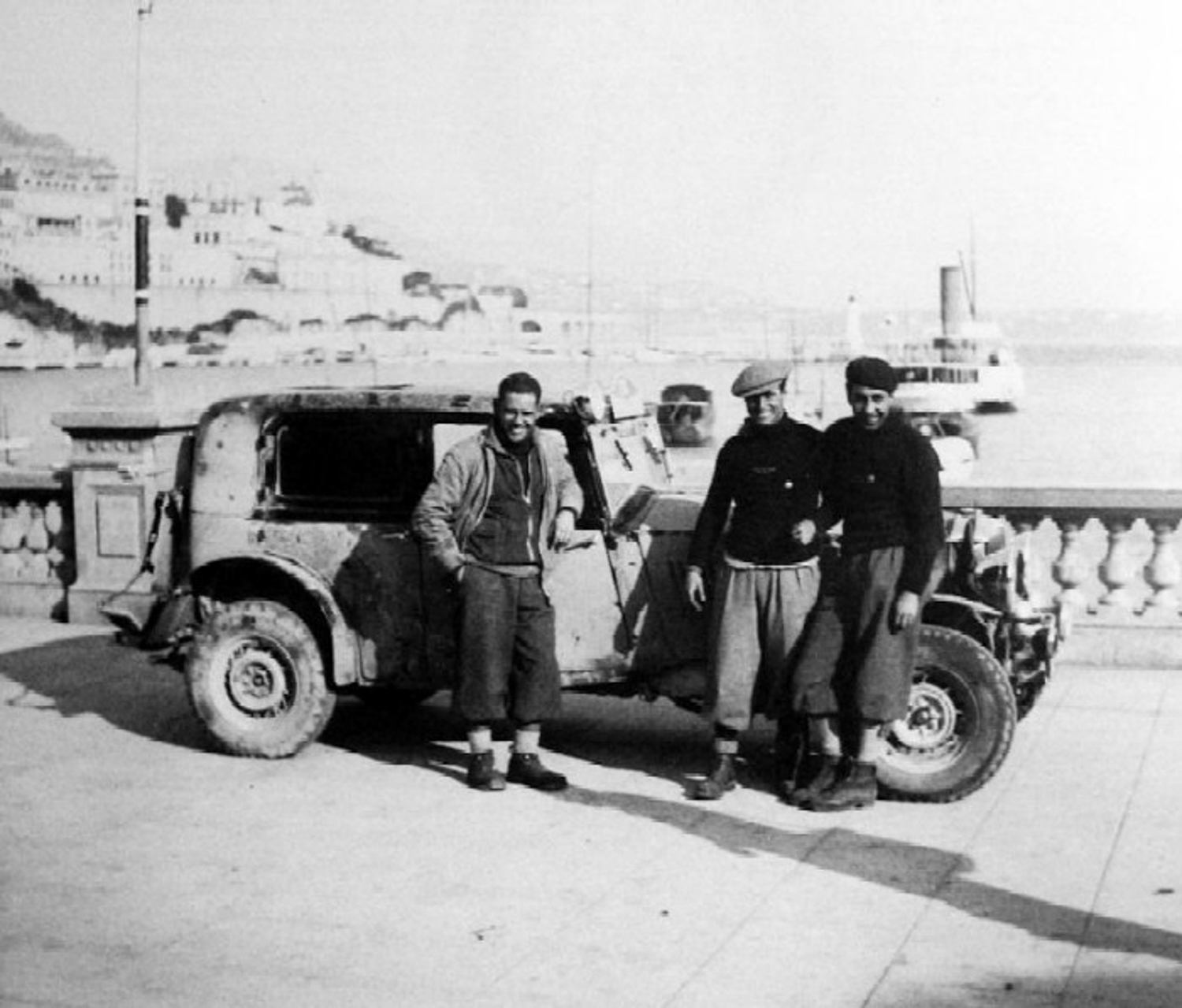
Weather has always been a crucial factor to the Monte, which was known for years as the only international winter rally. Snow and ice abounded as cars, large and small, tried to fight their way to victory. And that meant making the right tire choice. By the mid-’70s, manufacturers were taking thousands of their round black doughnuts to the Monte in all kinds of structures, tread compounds and patterns. And that was where a lot of poker playing acumen came in: making the right tire choice. Weather conditions can change dramatically on a 20-mile special stage in the Alps, meaning the right tires for the start of a stage could be totally wrong for the rest of it. So teams began setting up tire change “pit stops” mid-stage. Now, though, it seems global warming has hit the Monte too, as triple world champion Sebastién Loeb won the 2007 rally in a Citroën C4 WRC on pristine asphalt.
The ’50s results of the Monte Carlo Rally are peppered with famous names. Sidney Allard took the 1952 event in one of his own cars and the daring Stirling Moss came second in a Sunbeam Talbot 90. Even Monte Carlo’s own Louis Chiron, a distinguished Grand Prix performer, won the 1954 Monte in a Lancia Aurelia GT.
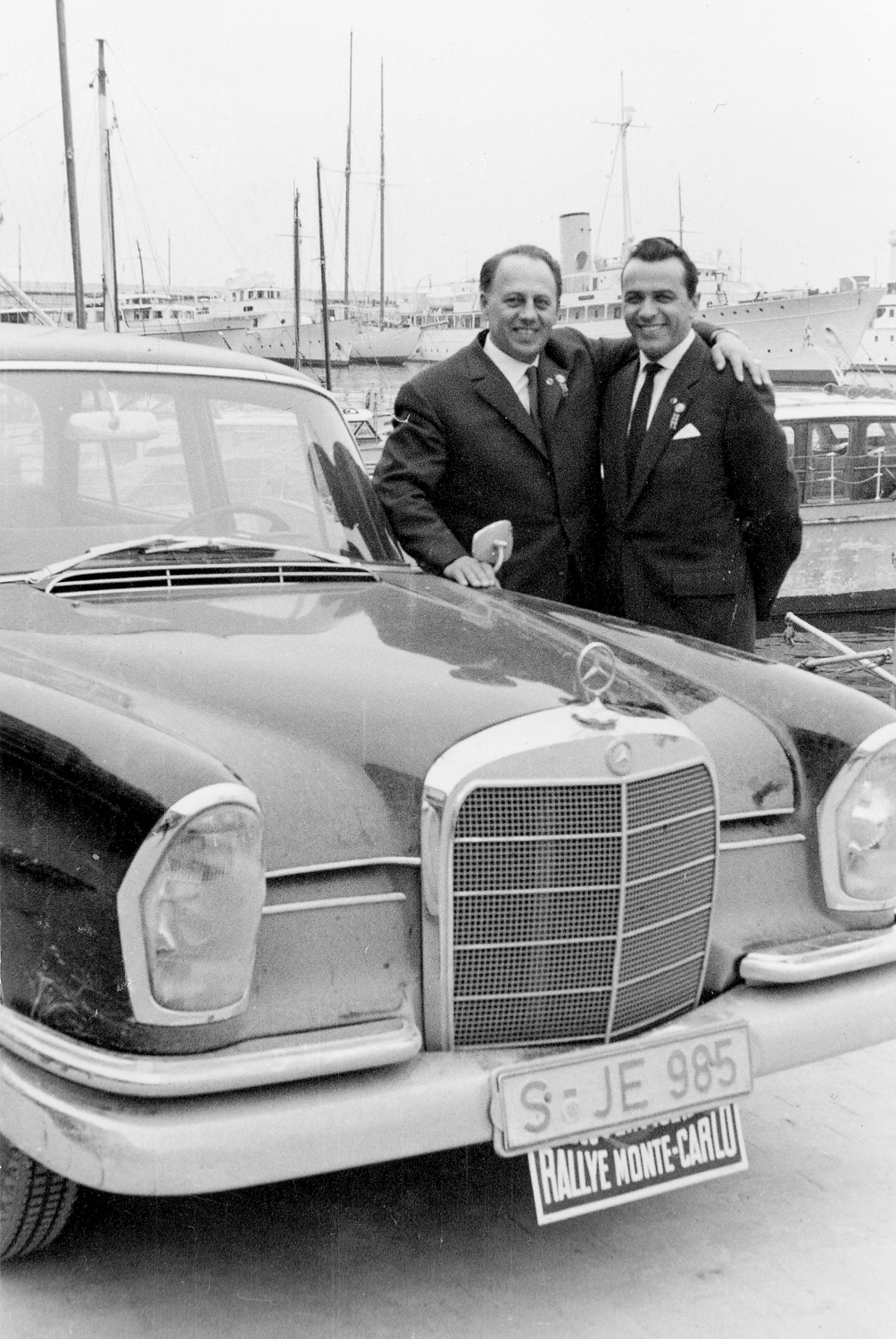
Mercedes-Benz knew all about practicing for road races, a technique used by their legendary team manager Alfred Neubauer to win the 1955 Mille Miglia. So it came as no surprise when the boys from Stuttgart turned up in the Principality before the 1960 Monte for some solid training. They practiced for six weeks on the final 179 mile mountain route, where they believed the rally would be won or lost. Sure enough, they covered the closing mountain circuit at such speeds that other competitors stood no chance. Walter Schock and Rolf Moll won hands down in their works Mercedes-Benz 220 SE, with Böhringer-Socher second and Ott-Mahle third in sister cars.
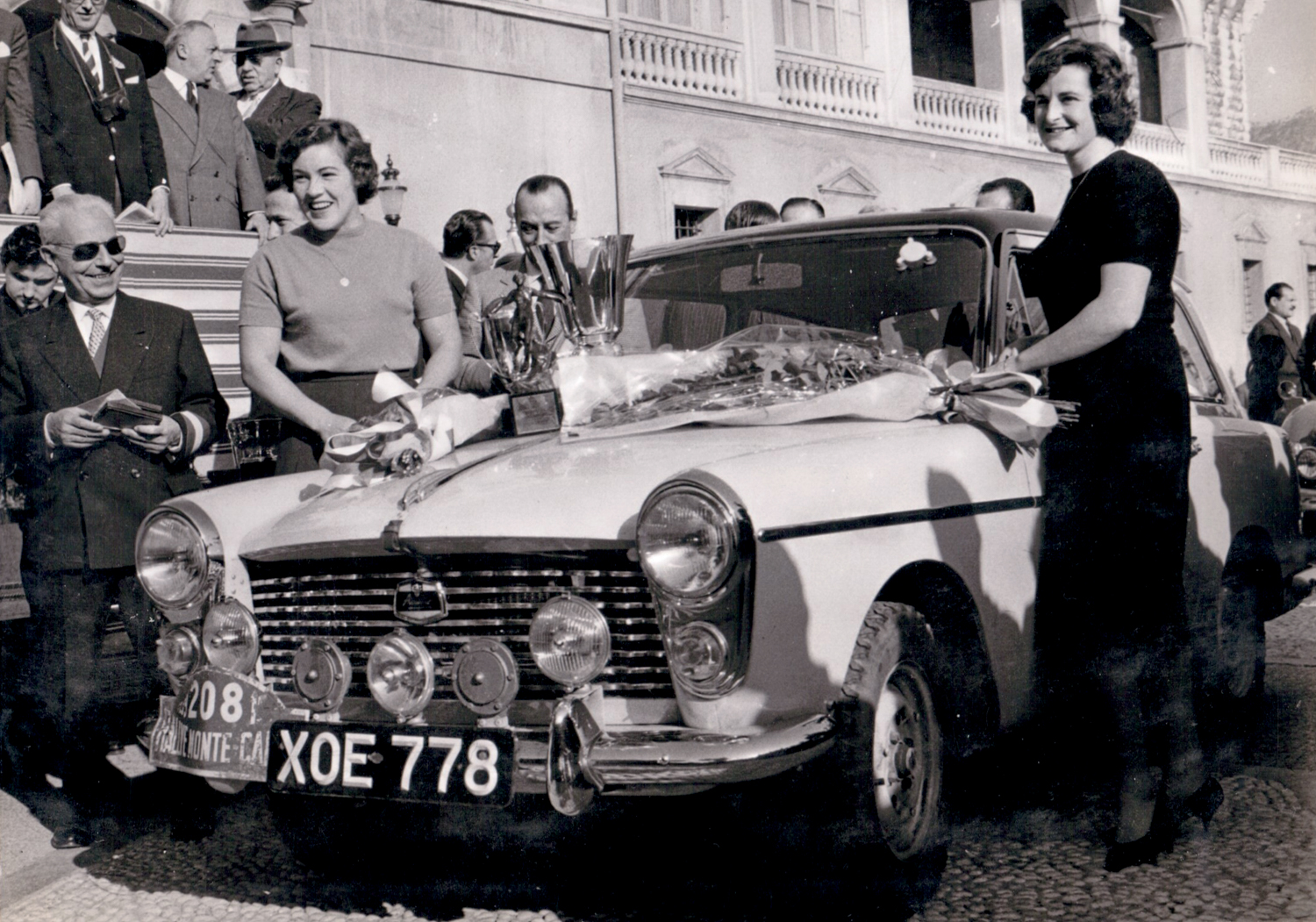
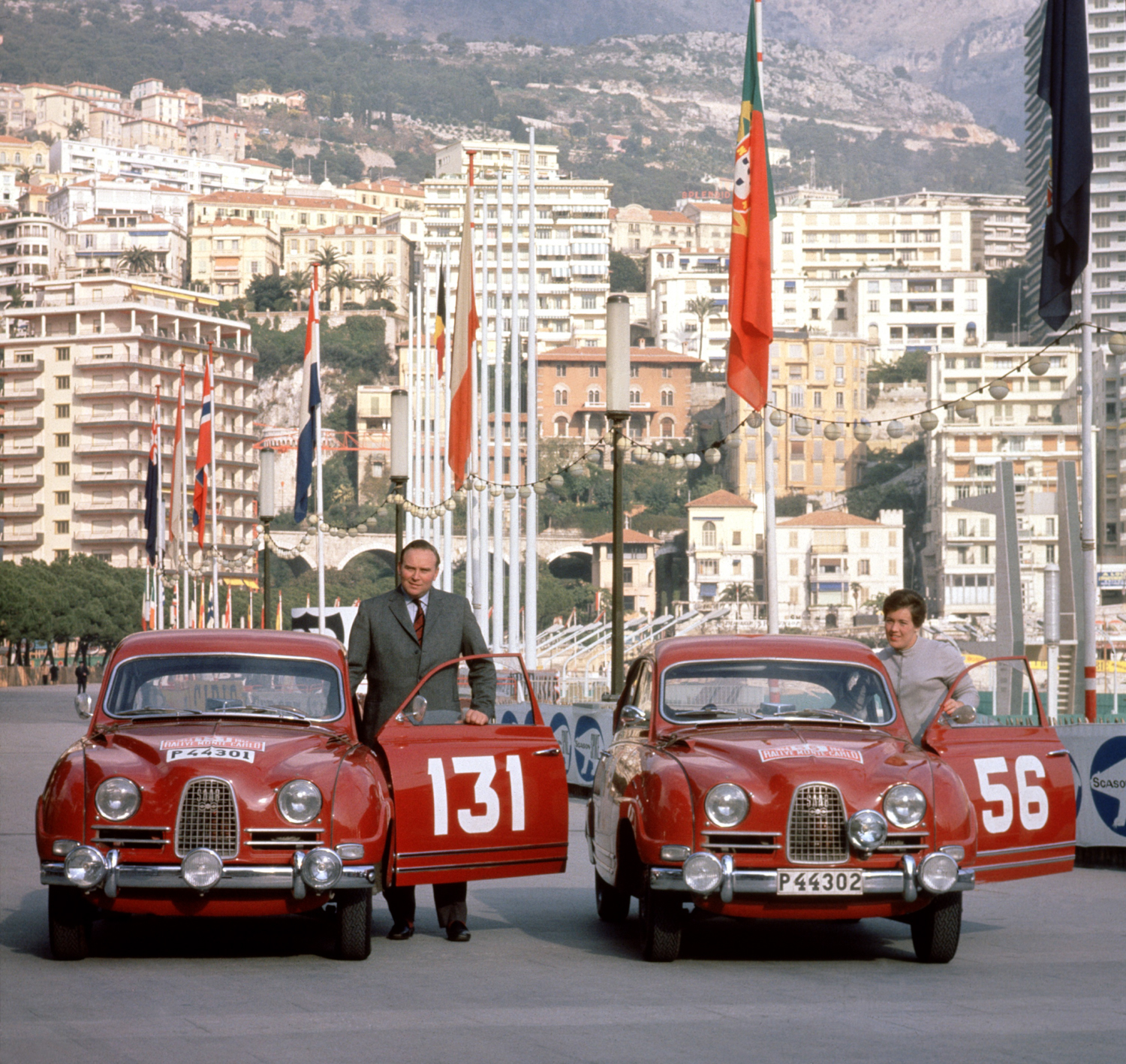
The 1962 was vintage Monte. It was won by a towering, affable Swede named Erik Carlsson in a little Saab 96, which he once described as “all green, four gears, no brakes”. Eugen Böhringer came second again for Mercedes and a young Belfast lad named Patrick “Paddy” Hopkirk third in a Sunbeam Rapier. Carlsson won the rally again in 1963 in a Saab 96.
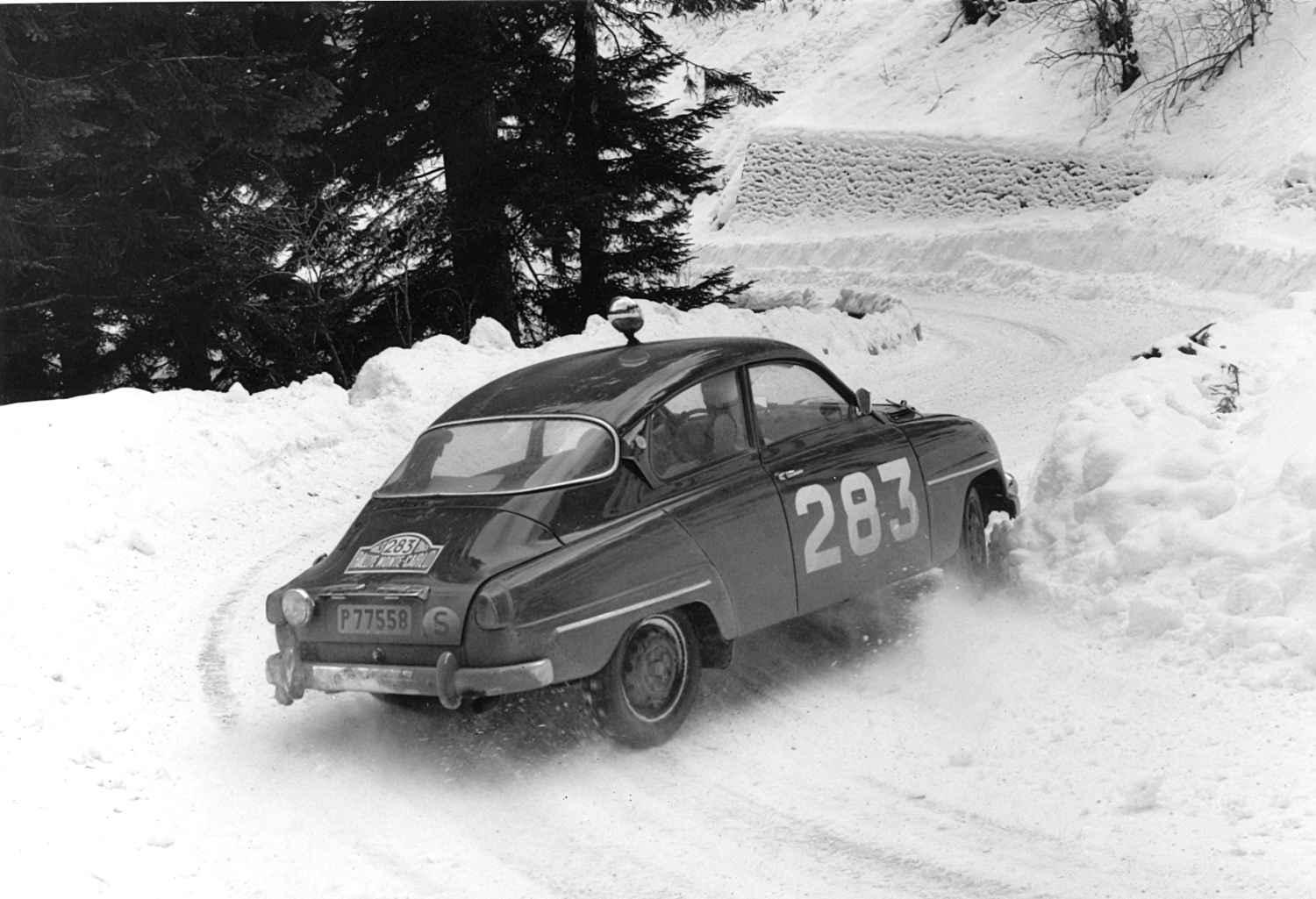
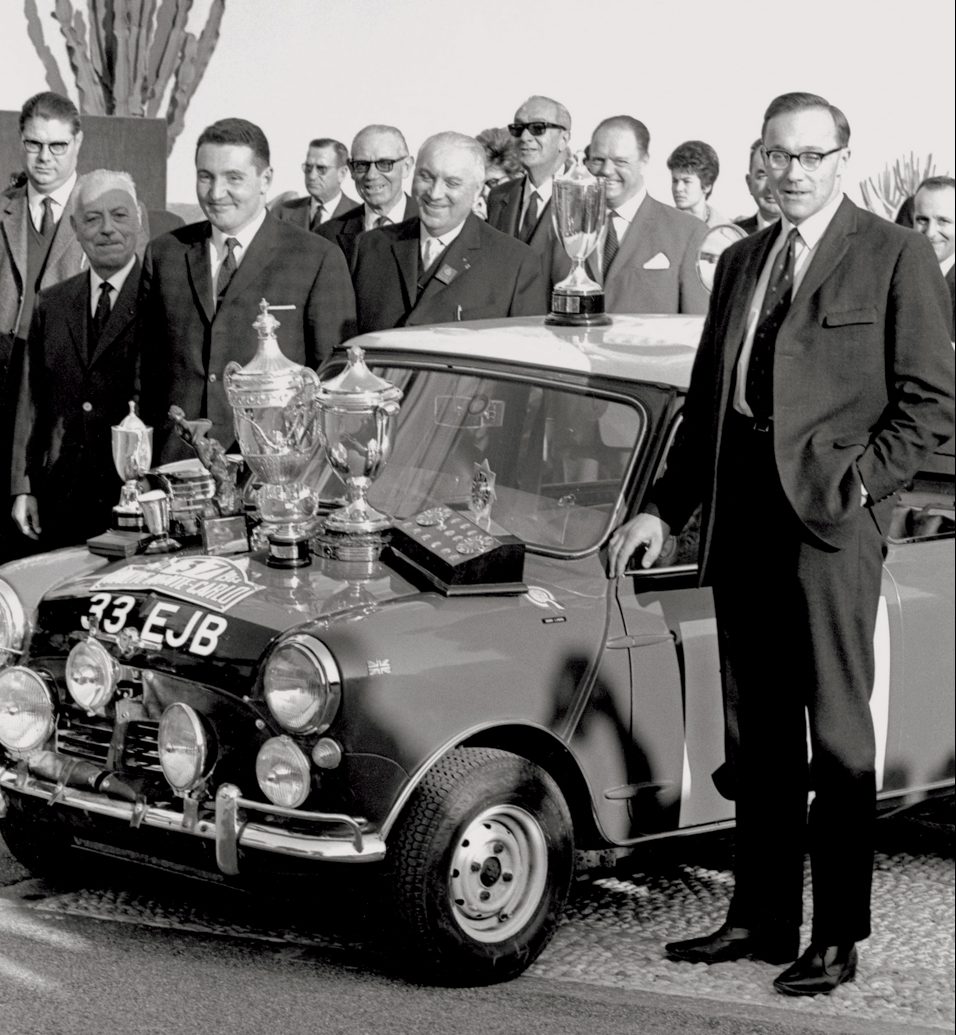
After that, the Monte belonged to the giant killing Mini Cooper S. Hopkirk had been recruited to the BMC team by competitions manager Stuart Turner to join Finns Timo Makkinen and Rauno Aaltonen. As it turned out, all three would win the Monte, but Paddy broke the ice with a spectacular victory in his little 1275-cc buzz box in 1964, when he trounced more powerful machinery from Ford, Mercedes-Benz, Volvo and Citroën.
Deft handling and the little car’s front-wheel drive completely outclassed the rest and Hopkirk won by 30 points over the second placed Ford Falcon. Pandemonium broke out when the BMC team landed in London, where their Monte Carlo Rally trophies, Paddy, his co-driver Henry Liddon and the winning Mini were the star attractions on Britain’s top TV show “Sunday Night at the London Palladium”. And Stuart Turner was a doubly happy man. Before leaving Monte Carlo he went to the city’s famous casino and put all his money on a combination of Paddy’s rally number … and won.
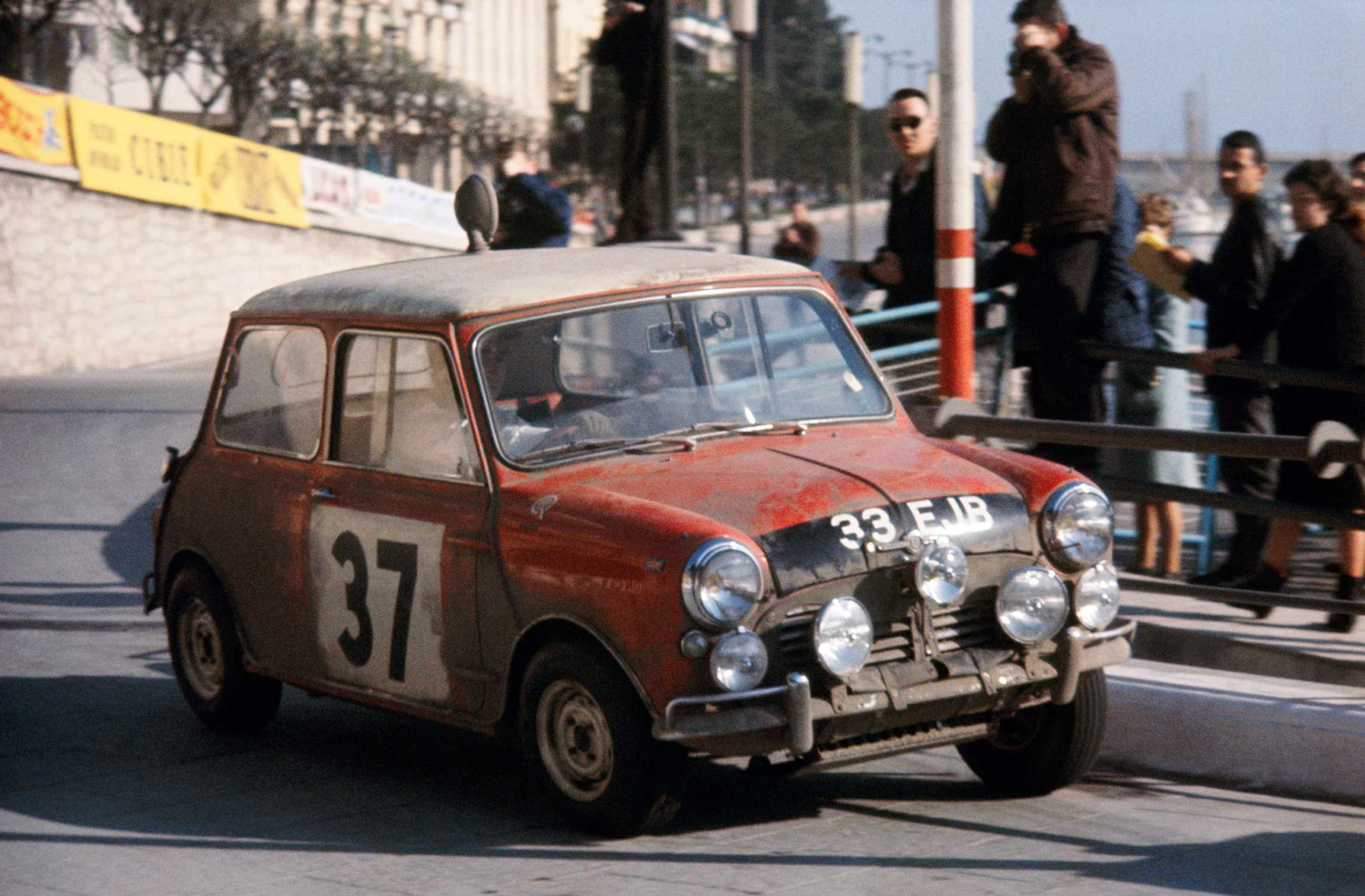
Timo Makkinen’s win in a Mini in 1965 was an incredible performance. His was the only car in the entire rally with no penalty points. He never arrived late at a time control in over 3,000 miles of competition!
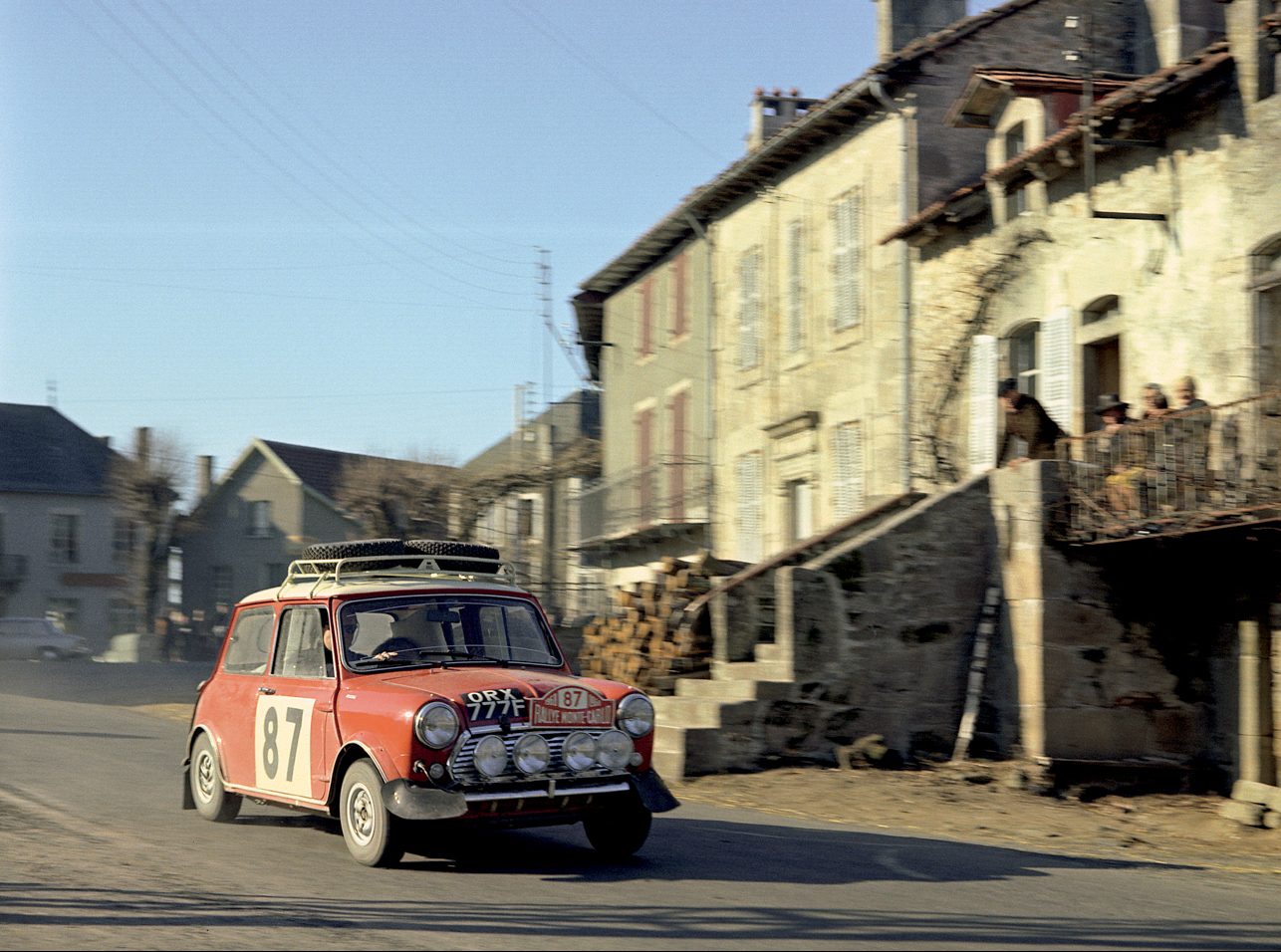
The Minis’ 1966 performance was mind blowing: they took the first three places. Paddy won again, Rauno came second and Timo third, but they were all disqualified for having supposedly illegal spotlights and headlamps. The British team protested strongly, but to no avail. Back home, people who had not even heard of rallying were seething: the disqualification dealt a crippling body blow to Anglo-French relations, especially when victory was handed to embarrassed Finn Pauli Toivonen, who had really come fourth in a Citroën ID.
The next year, though, the Mini Coopers were strictly legal and, sure enough, the tiny car won again, this time driven by Aaltonen, with Ove Andersson second in a Lancia Fulvia and Vic Elford third driving a Porsche 911 S.
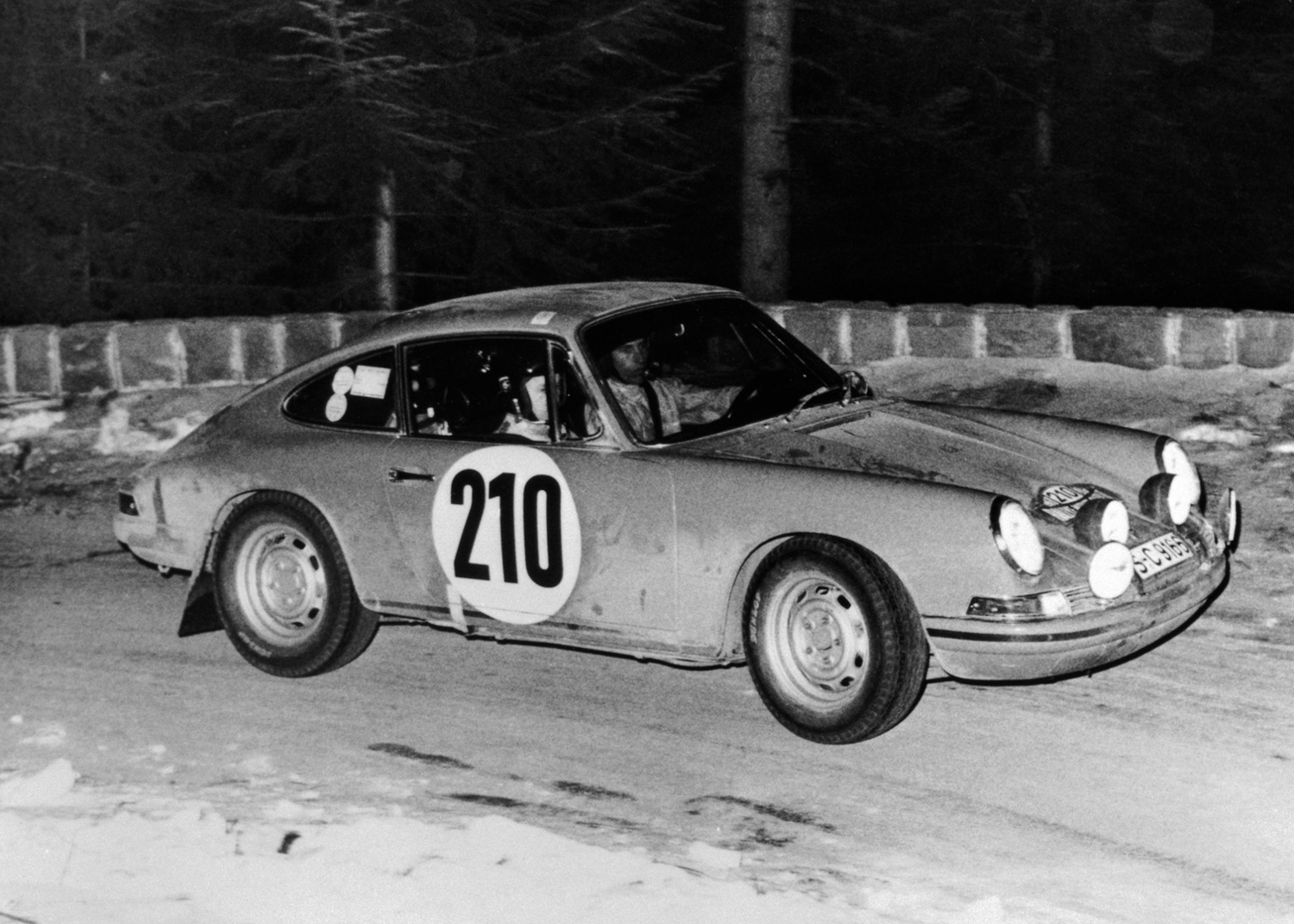
By 1968, the Mini Coopers had had their day and it was Porsche’s turn to hog the limelight. Vic Elford won in a 911 T that year, as did Björn Waldegård in Porsche 911 Ss in 1969 and 1970: he called the tail heavy Porker his “dream car”.
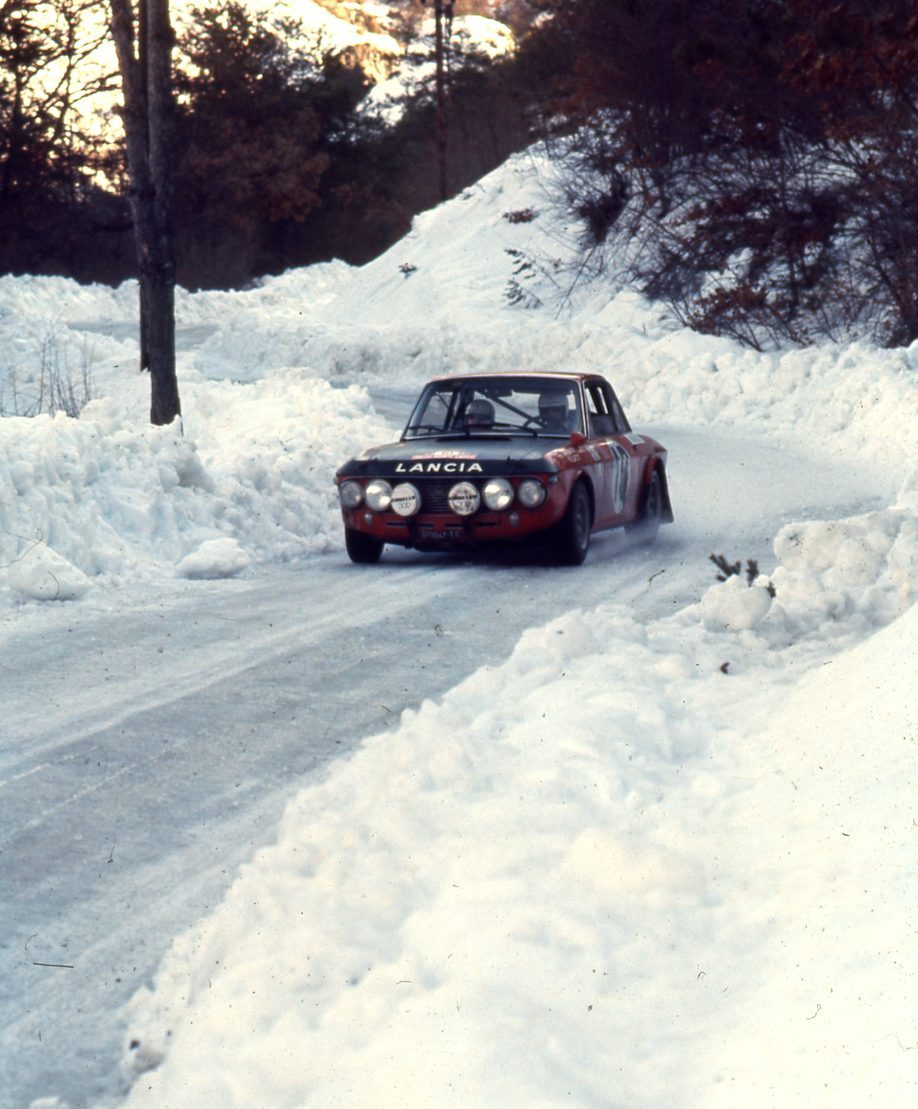
A dynamic young driver won the 1972 Monte Carlo Rally in a Fulvia 1.6 HF and set Lancia off on the road to two decades of world championship domination. His name was Sandro Munari and he would go on to win the Monte a record four times. Munari, a quiet, thinking man’s rally driver, will forever be synonymous with the Lancia Stratos, which he was instrumental in turning a Bertone Turin Motor Show design exercise into one of the most exciting and successful rally cars of all time. He won the Monte Carlo in the wedge shaped, Ferrari engined 2418-cc Stratos for three consecutive years from 1975-1977. In 1976, this purpose-built rally car took all three top places in the Monegasque event, driven by winner Munari, second placed Jean-Claude Andruet with Bernard Darniche in third.
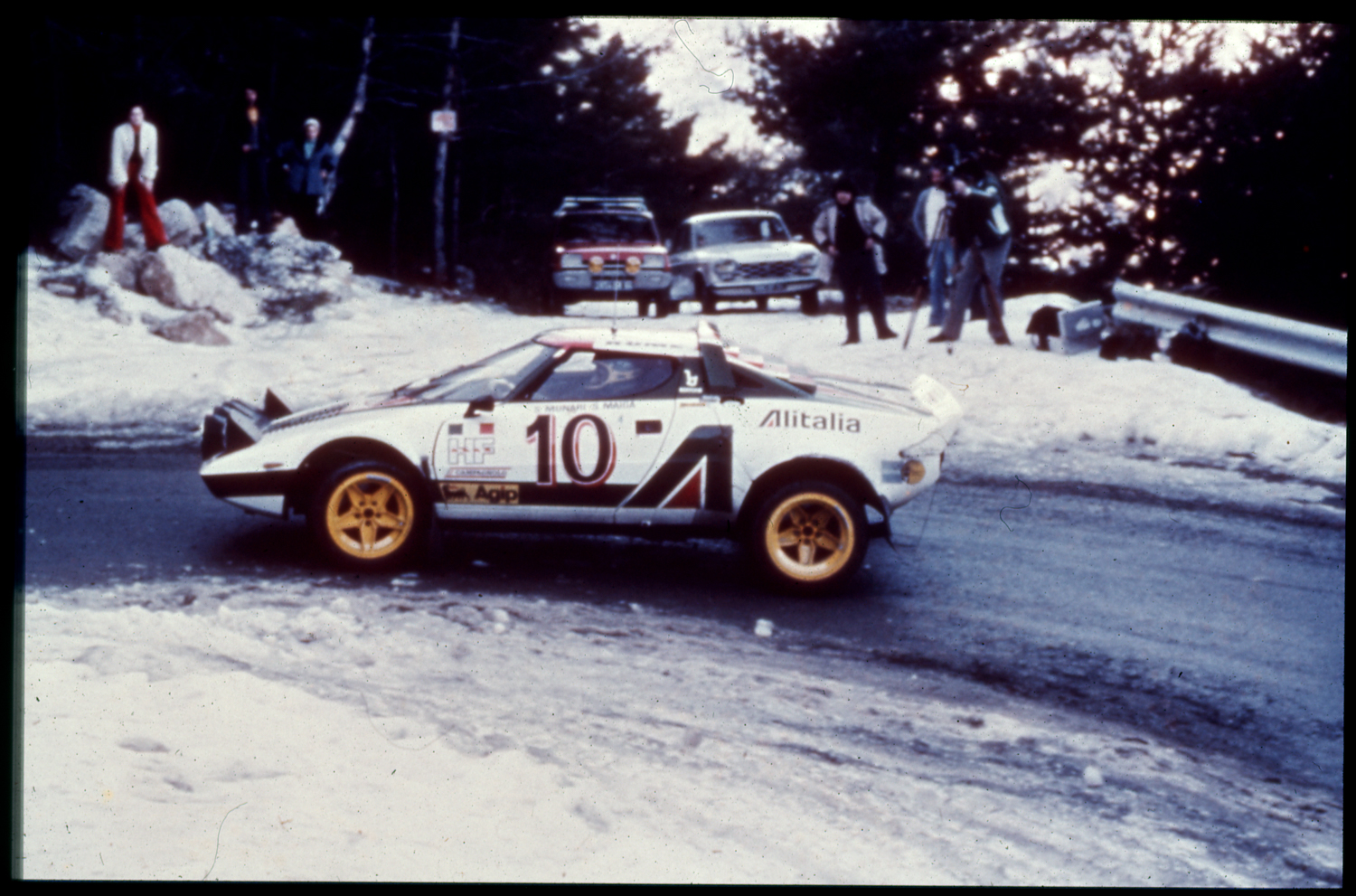
Where the Stratos left off, the Fiat 131 Abarth took over. A boxy rally version of the Italian group’s modest road car, the 131 was given the Abarth treatment to become a 1995-cc, 230-hp quadruple world champion and winner of the 1980 Monte Carlo Rally, driven by Walter Röhrl.
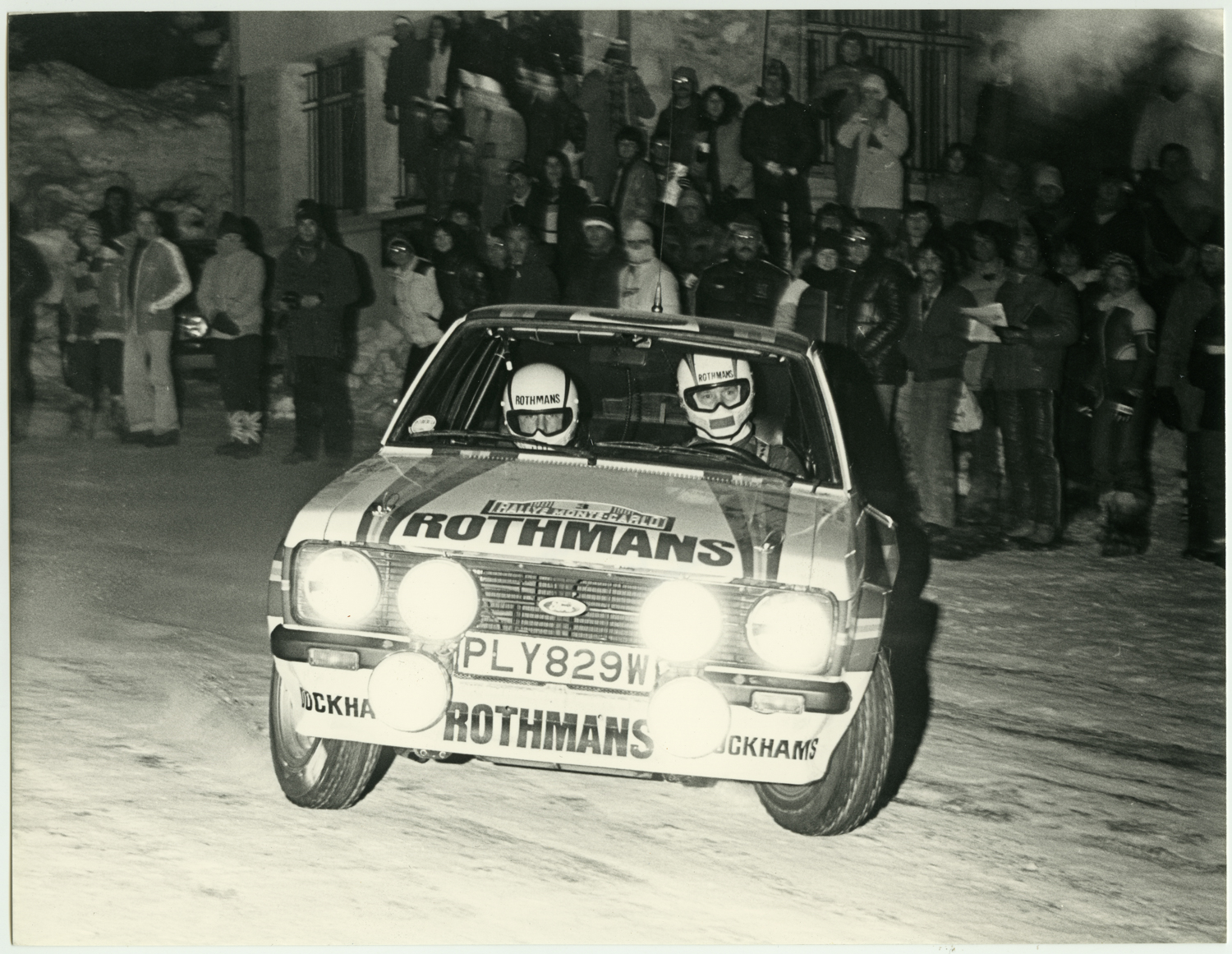
Rallying’s first four-wheel drive car burst onto the scene in the 1981 Monte. It may not have lasted the distance, but before it went out due a minor error by driver Hannu Mikkola, it was taking one minute a stage off all the other competitors.
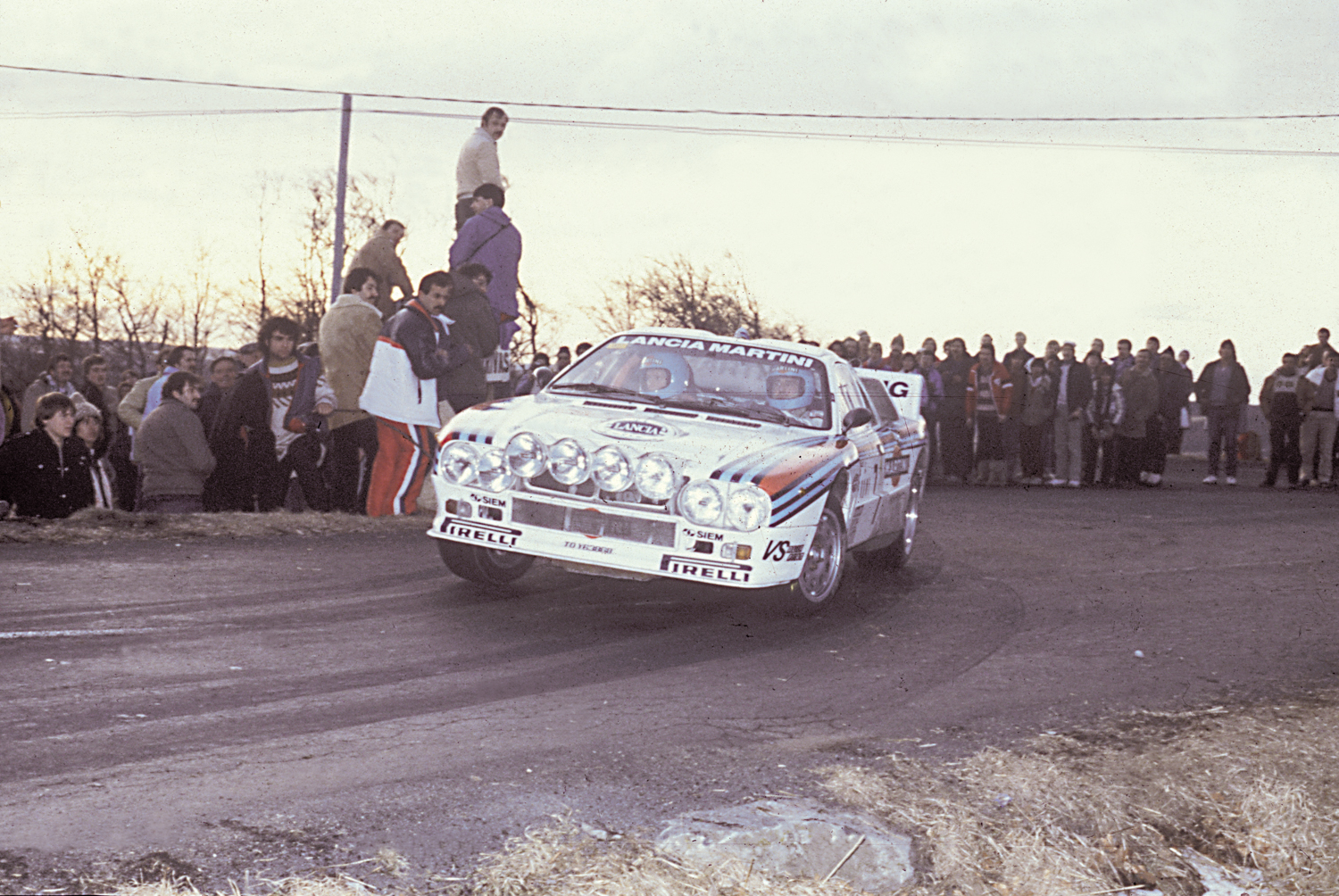
Probably the most beautiful car ever to win the Monte was the Pininfarina designed Lancia Rally 037, which Röhrl drove to success in the principality in 1983, the year the car won the World Championship for Makes. The 037 ended up generating 325 hp at 8000 rpm in 1984, but by that time the Audi Quattro had got well into its stride.
The world championship winning Audis, in which Hannu Mikkola and Stig Blomqvist won their titles, also took the Monte Carlo Rally in 1984 in the hands of Walter Röhrl, with Blomqvist and Mikkola second and third in similar cars.
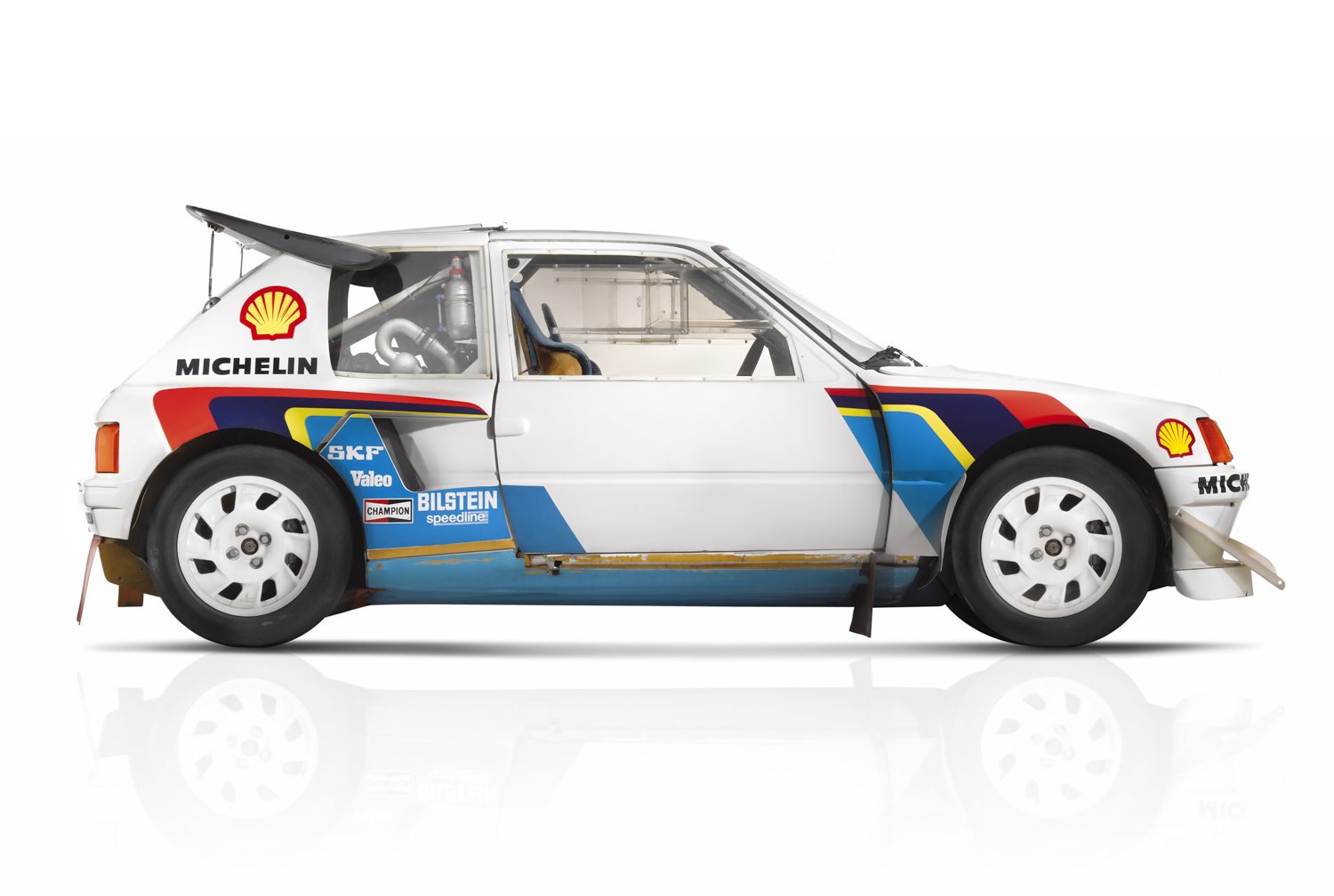
Peugeot had their share of glory in 1985, when Ari Vatanen, the Finn with the film star good looks, won the Monte Carlo Rally in the four-wheel drive, turbocharged 205 T16, before Lancia came back again with the turbocharged and supercharged four-wheel drive Delta S4. The explosive little Lancia put out a massive 450 hp, which the late Henri Toivonen, Pauli’s son, put to good use to win the 1986 Monte in a crazy year of the ultra-powerful Group B cars. FISA outlawed the dangerous Group Bs and ruled that the 1987 world championship would switch to the more “docile” Group As.
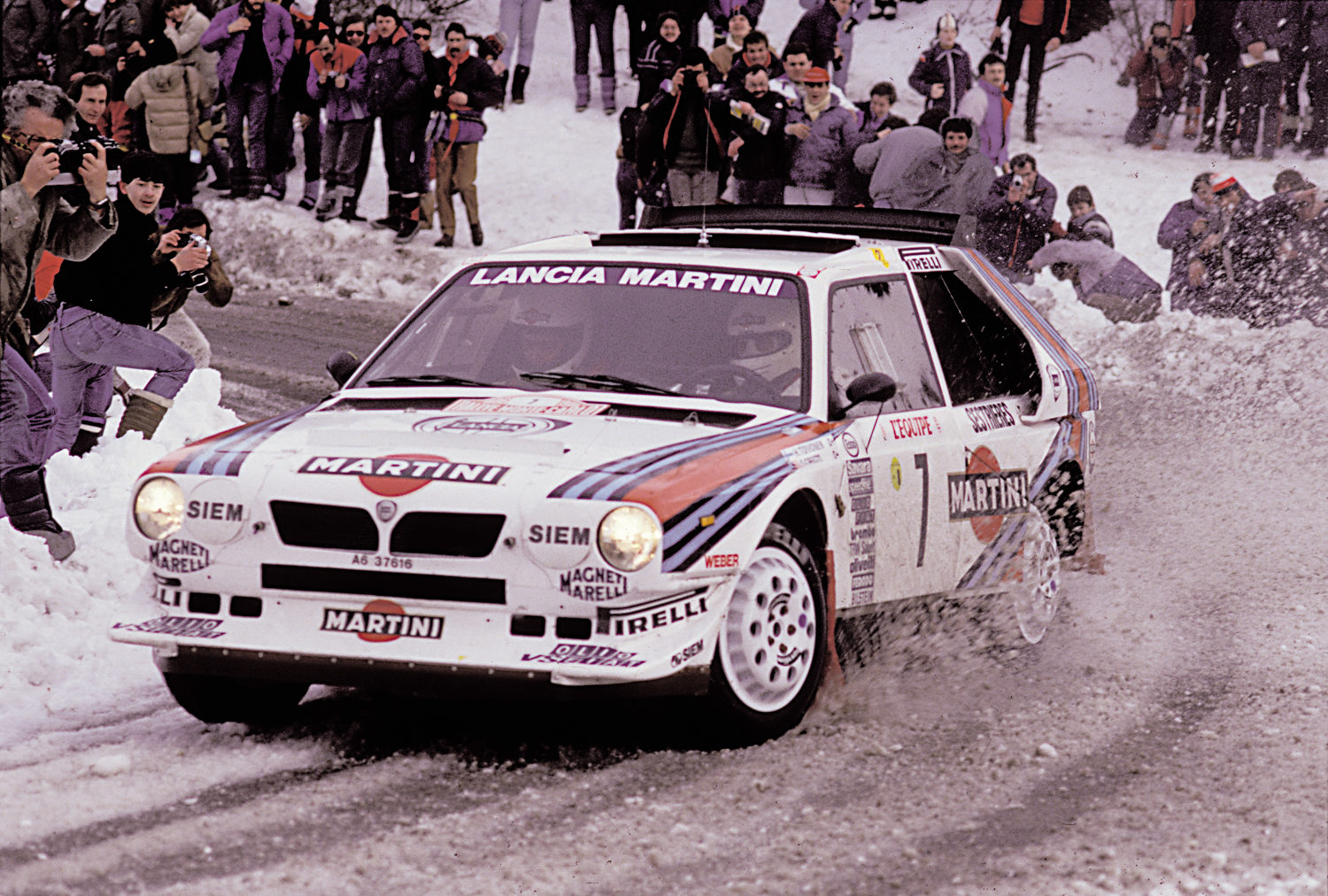
And again Lancia stunned the world by coming up with the 250 hp Lancia Delta HF 4×4 in which world champion Miki Biasion won the ’87 Monte, as did Bruno Saby in 1988. Biasion won again in 1989, this time in a 300 hp Delta HF Integrale, which Didier Auriol also used to take the first of his three Monte Carlo victories the following year: the Frenchman then won the event in an HF Integrale in 1992, after which he switched to Toyota to win once more in 1993 driving their Celica Turbo 4WD. Auriol won his world title in 1994.
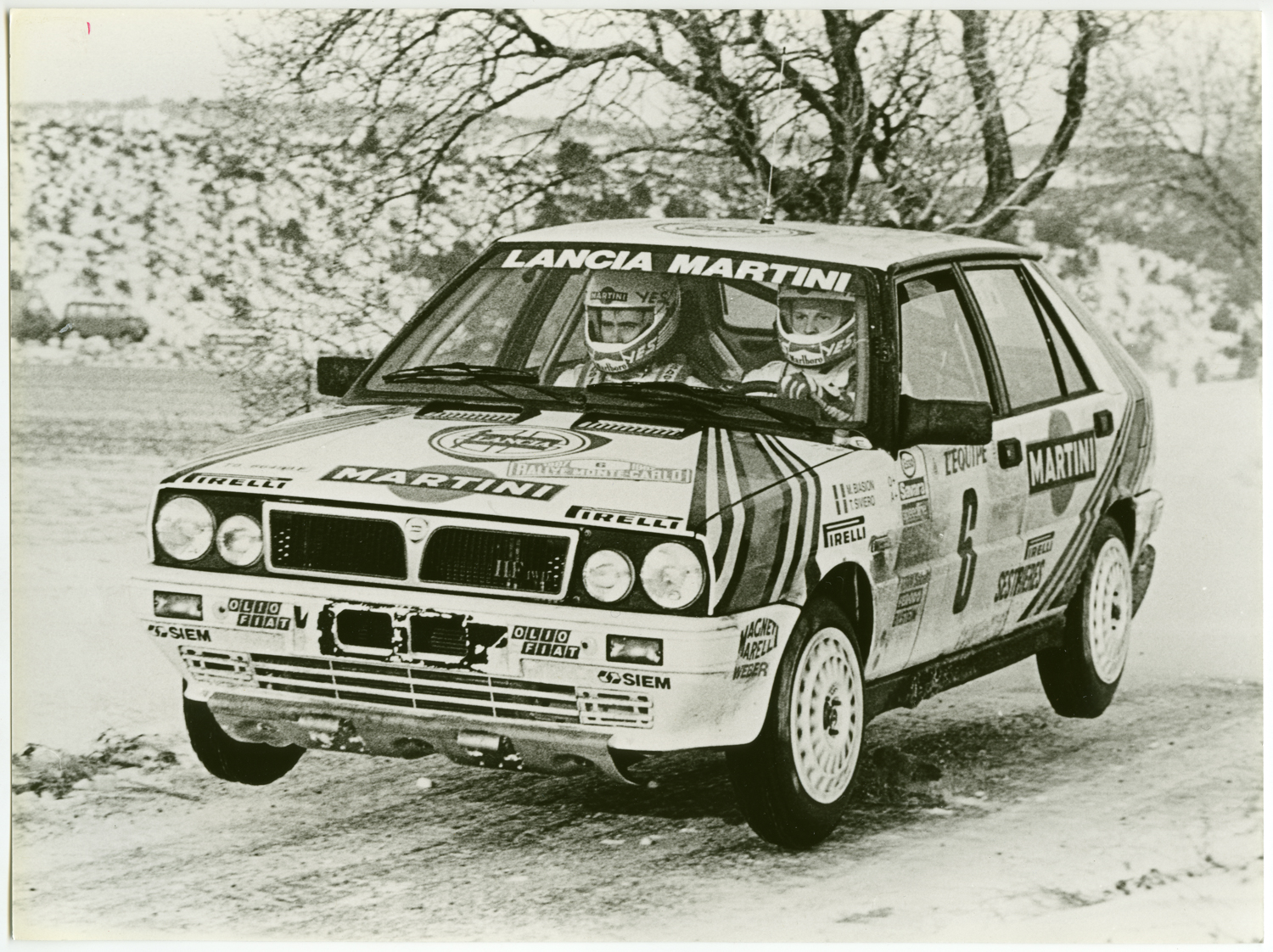
Triple world champion Carlos Sainz of Spain was another three times winner of the Monte. He won for Toyota in 1991, Subaru in an Impreza 555 three years later and in 1998 driving a Toyota Corolla WRC.
Ford had long ago established itself as one of the top names in international rallying: Leo Zamfirescu first won the Monte Carlo for them in 1936. Francois Delecour did so again in 1994 driving an Escort RS Cosworth, and Patrick Bernadini scored his victory in a similar car two years later.
The end of the Nineties saw the start of Finn Tommi Makinen’s astounding career, in which he would eventually win the world championship four times. He also won four Monte Carlo Rallies, the first three in Mitsubishi Lancer EVOs in 1999, 2000 and 2001 and drove a Subaru Impreza WRC to victory in the Principality in 2002.
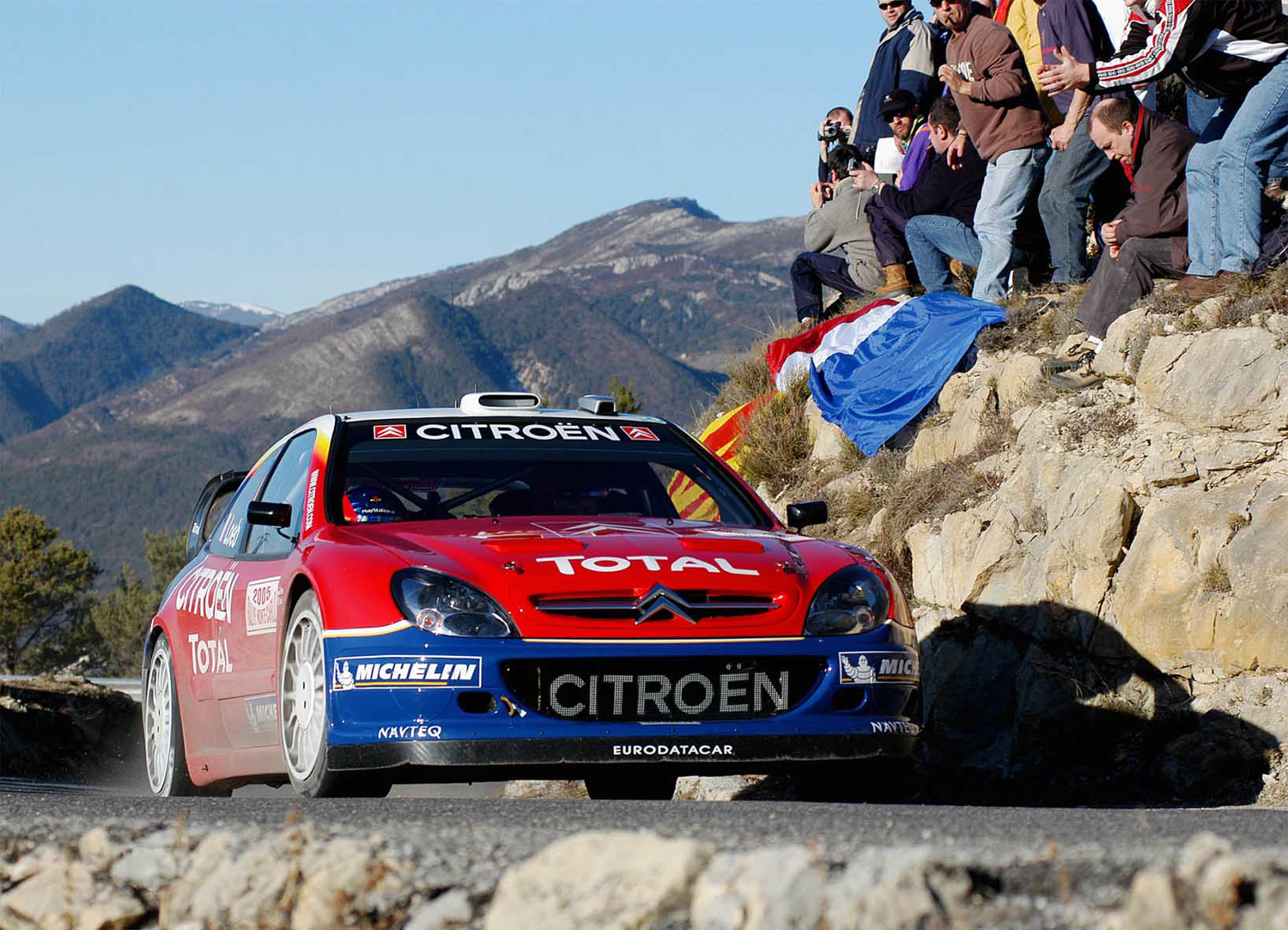
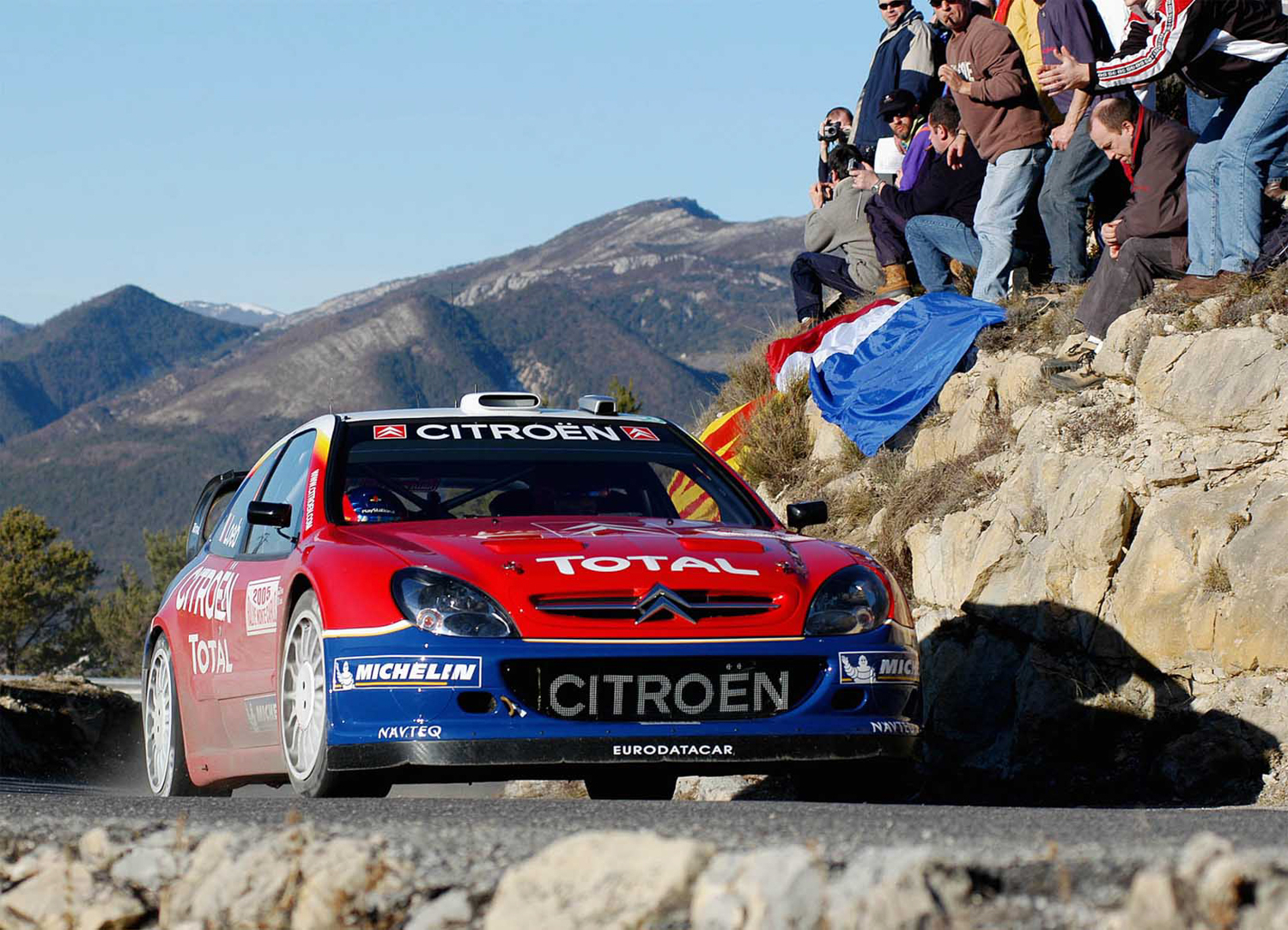
Exit one dominant world champion, enter another. Born in Oberhoffen, France, in 1974, Sebastién Loeb is already a triple world champion. He won all four of his Monte Carlo Rallies in Citroëns: the 2003-2005 in Xsara WRCs and the 2007 driving a factory Citroën C4. Already one of only three drivers who have won the Monte four times, 32 years old Sebastién is well on his way to becoming the king of the Monte Carlo Rally as the only man to have won the great event five times.
Editor’s Note: As of 2021, Sebastién Loeb has now won the Monte Carlo Rally a total of 7 times, but has been surpassed in recent years by Sebastién Ogier, who has won it a remarkable 8 times.


